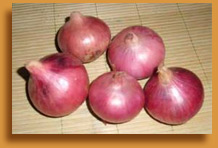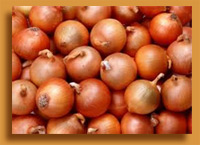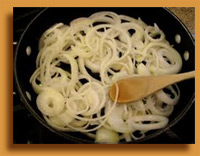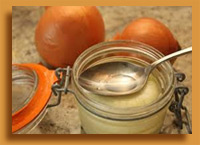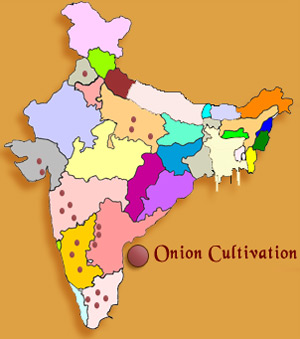ONION
Introduction
Onions vary in color, shape, and taste. Bulbs can be white, yellow, or red, and round, flattened, or torpedo-shaped. Some bulbs are sweet while others are pungent. Onion bulbs develop in response to hours of daylight. Short-day onions produce bulbs during periods of short days and long nights. Long-day onions produce bulbs during periods of long days and short nights. Long-day varieties generally are more pungent and also store better. There are usually two types of big, globe-shaped onions, categorized as spring/summer or storage onions.
Common Names
The previous class includes those that are cultivated in warm weather climates and have attributed mild or sweet tastes. Storage onions are cultivated in colder weather climates and after harvesting, they are dried out for a phase of several months, which allows them to accomplish dry, crisp skins. They usually have a stronger flavor and are usually named after their color such as white, yellow or red. Spanish onions falls by default into this category.Moreover there are also smaller ranges of onions such as the green onion or scallion and the pearl onion.
Onions are a chief source of polyphenols in common, and also of flavonoids a very important subdivision of polyphenols. They can also differ greatly in their polyphenol and flavonoid substance. In common, red onions are superior in total flavonoids than white onions, with yellow onions declining somewhere in between.
History
It is reputed that our predecessors discovered and started consuming wild onions very early and long before farming or writing was made-up. Very likely, this unassuming vegetable was a staple in the primitive diet. The majority of the researchers agree that onion has been cultivated for 5000 years or more. Since onions grew untamed in various regions, they were probably frenzied for thousands of years and disciplined simultaneously all over the world. Onions may be one amongst the earliest grown crops because they were less delicate than other foods of the time, were portable, were simple to grow, and could be grown in a diversity of soils and climates.
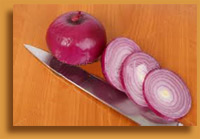
Moreover, onion was helpful for sustaining human existence. Onions disallowed thirst and could be dried and conserved for later consumption when food might be limited. While the position and time of the onion's origin is still an anonymity many documents from very early times explain its importance as a food and its use in fine art, medicine, and mummification. Onions were consumed by the Israelites in the Bible. In Numbers 11:5, the children of Israel lament the scanty desert diet forced by the Exodus and said "We keep in mind the fish, which we did eat in Egypt liberally, the cucumbers and the leeks and the melons and the onions and the garlic".
In India as premature as the sixth century B.C., the famous medical discourse Charaka - Sanhita celebrates the onion as remedy, a diuretic, fine for digestion, the heart, the eyes, and the bone joints. Similarly, Dioscorides, a Greek doctor in first century A.D., noted quite a lot of medicinal uses of onions. The Greeks used onions to reinforce athletes for the Olympic Games. Prior to competition, athletes would eat pounds of onions, sip onion juice, and rub onions on their bodies. By the end of the Middle Ages, the three most important vegetables of European cuisine were beans, cabbage and onions. In addition to helping as a food for both the poor and the rich onions were approved to alleviate headaches, snakebites and hair loss.
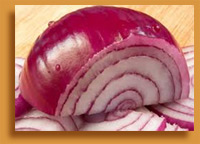
They were moreover used as rent payments and marriage gifts. Later, the first Pilgrims brought in onions with them to the Mayflower. However, they established that strains of wild onions already grew all the through North America. The native American Indians have been using wild onions in a range of ways, eating them uncooked or cooked, as a zest or as a vegetable. Such onions were also used in preparing syrups, as poultices, as an element in dyes, and even as toys. In accordance to diaries of colonists, bulb onions were grown as soon as the Pilgrim fathers could clear the ground.
Uses
Cooking
Onions are considered as the workhorses of the Allium family unit, yet some varieties are more fitting for specific uses than others. Sweet onions are great uncooked in salads and for making instant pickles. Hotter brown and white color skinned onions are most excellent for soups and stews, and for baking or frying in whole or in wedges. Red onions cook to a tasteless grayish brown, so they are used only in salads or fast cooking dishes that allow them to uphold their glorious color. Small onions are very much useful for cooking it completely in stews, ragouts and for pickling.
Cipollini onions are little and pale yellow in color, and their flatness allows them to be cooked quickly and consistently. Onions are amongst the world's most overpowering foods when eaten uncooked. But when they are cooked, they start losing some of their sharp flavor. When cooked to the position that their normal sugars caramelize then onions grow dim to a deep golden brown color and takes on an fascinating sweetness. Sometimes an onion turns brown quickly or exudes lots of liquid when saut&ead. This is because of its high sugar content, the sweeter the onion the faster it will brown and caramelize.
Medicine
Onions restrains 25 active compounds that emerge to inhibit the expansion of cancerous cells, allium being the main element. Onion has been established to help fight heart diseases, slow down strokes, lessen blood pressure and cholesterol and motivate the immune system. The potassium salts and the flavonoides that are there in the onion perform an anti-inflammatory act. The essential oil extracted from the onion is an expectorant, anticoagulant, antiseptic, antifungal, high-blood pressure, antithelmitic, balsamic, rubefciant, and has painkilling traits.
The onions' capability to relieve congestions particularly in the lungs and bronchial tract, is hard to accept as truth until one has actually witnessed the results. The drawing of illness, congestion and colds out of the ear is also noteworthy. There have been issues in which the onion has been confirmed to be so successful as an antiviral that a cut piece of onion placed in a closed room will avert the person in the room to be protected from viruses
Onion Cultivation in India
